LA GALERIE DIOR – A HOMAGE TO THE ARTISTRY OF THE ‘MASTER OF DREAMS’
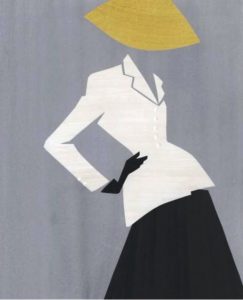
Near the top of our list of must-sees on our recent visit to Paris was the Christian Dior museum, La Galerie Dior, which I briefly mentioned in the last blog. I had read about its official opening, just 3 weeks before we hit town. A good friend of ours, the manager of the beautiful Zegna menswear boutique on Ave. George V, urged us to make a visit a priority, as word was spreading fast. This was also a great sign that things in Paris had re-opened, and that COVID was well and truly behind them. The museum is located in part of the original couture headquarters at 30 Avenue Montaigne, in a magnificent Haussmann-era stone building.
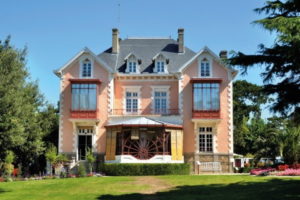
Christian Dior was born in town of Granville, on the Normandy coast, on 21 January 1905. The second of five children, he was particularly close to the youngest, his sister Catherine. His father was a wealthy chemical and fertiliser manufacturer, and the family enjoyed a prosperous lifestyle. When he was five, the family moved to the 16th arr. In Paris, and kept the Granville property as a holiday house.
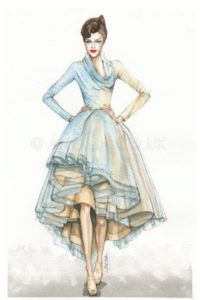
His parents had hopes of him becoming a diplomat, and despite his artistic abilities and interest in museums and galleries, Christian studied political science at the prestigious École des Sciences Politiques (usually referred to as ‘Sciences Po’). He sold sketches on the street outside his house to make some money.
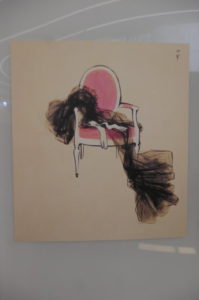
He eventually took over a small avant-garde art gallery in rue La Boétie with a friend Jacques Bonjean, that his father bought for him on a whim, and sold work by emerging artists including, Max Jacob and Christian Bérard alongside established artists such as Picasso, Matisse and Dufy. In 1932 he joined forces with another friend, Pierre Colle to open another gallery in rue Cambacérès, dedicated to Surrealism. Following the death of both his mother and one of his brothers, and the cataclysmic effects of the Wall Street Crash and the Great Depression in 1929, his father’s business collapsed, and Christian was forced to close the gallery.
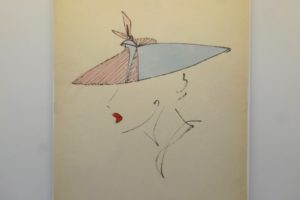
After his 2 years of compulsory military service, Christian began selling his designs to milliners and fashion houses such as Jean Patou, Schiaparelli, Nina Ricci, Maggy Rouff, Worth, Balenciaga, Molyneaux and Paquin, and worked as an illustrator for Le Figaro and Jardin des Modes.
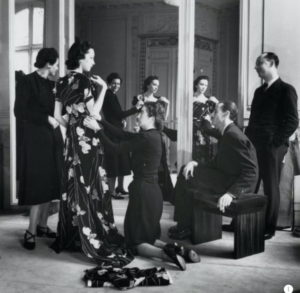
In 1938 he was employed by the fashion designer Robert Piguet, who gave him the opportunity to design for 3 Piguet collections. Dior would later say that ‘Robert Piguet taught me the virtues of simplicity through which true elegance must come.’ During this time, Christian worked alongside Pierre Balmain. They both then joined Lucien Lelong, where they continued to work during the years of Occupation in WW2. Dior felt strongly that it was essential to preserve the French fashion industry and the extraordinary skills of the industry’s workforce, and thus help alleviate wartime privations and difficulties for the mostly female employees. Other fashion houses that remained in business during the war years included Jean Patou, Jeanne Lanvin and Nina Ricci.
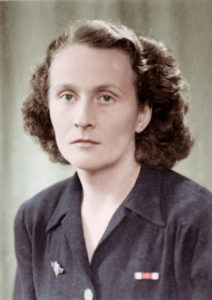
During these years, Christian’s adored sister, Catherine became a member of the French Resistance, only to be captured by the Nazis, tortured and deported to Ravensbrück concentration camp, where she was incarcerated until the camp was liberated in 1945. Christian named his first fragrance, ‘Miss Dior’ in tribute to his sister.
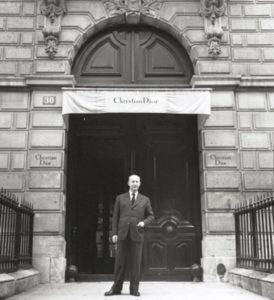
In 1946, Marcel Boussac, a textiles magnate and regarded as the richest man in France, backed Christian Dior to establish his own fashion house, rather than revive an old house as Boussac first suggested. The first collection of the House of Christian Dior was presented on 12 February 1947 at 30 Ave Montaigne. For the couturier, it was love at first sight for this hôtel particulier that has since become a legend in the fashion world. “When the house Christian Dior first opened, it had three Ateliers under the eaves of 30 Avenue Montaigne, a tiny studio, a salon, a salon in which to show the dresses, a cabine or dressing room for the models, an office and six small fitting rooms,” recounted Dior in his memoirs.
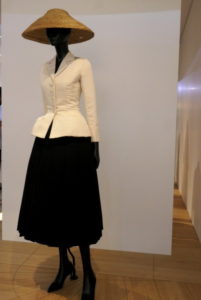
This debut collection comprised 90 different looks with names such as “Huit” and “Corolle” which had what was to become the iconic garment from the range, the “Bar” jacket. The designs were quickly christened the “New Look” by the influential editor of Harper’s Bazaar magazine, Carmel Snow. She came up to Dior after the show to congratulate him, declaring that “It’s quite a revolution, dear Christian. Your dresses have such a new look”. The applause from the audience had increased throughout the parade, culminating in a standing ovation at the finale.
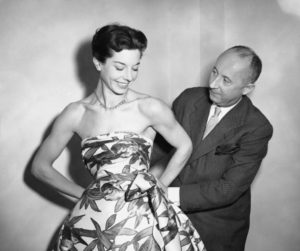
The great photographer, and discerning observer of fashion, Cecil Beaton, recognised that Dior had conjured up an exhilarating sense of delight “after a gloomy interval of war,” but he also perceived the couturier’s homage to the past: “With an impeccable taste, a highly civilised sensitivity, and a respect for tradition that shows itself in a predilection for the half-forgotten, Dior creates a brilliant nostalgia.”

It was a reinterpretation of the Belle Epoque, when his mother Madeleine had dressed in the romantic, sweeping gowns of the era, that inspired Dior’s creation of the rustling, full skirts and rounded silhouette, achieved by a tightly corseted waist, boned bodices, padded bust, hipline and crinoline-like forms with petticoats of stiffened tulle. These made the dresses flare out from the waist, giving his models a very curvaceous, even voluptuous, form. As Dior explained, “An ethereal appearance is only achieved by elaborate workmanship…” The New Look celebrated the sense of joie de vivre after the dark, austere years of the war. In effect, Dior revolutionised the fashion codes of elegance and femininity.
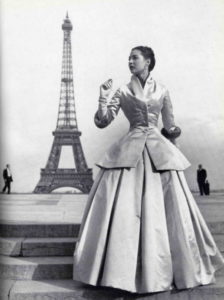
The average dress used up to a staggering 18 metres of fabric. This opulence contrasted with the grim post-wear reality of Europe where most people were surviving on rations for almost every commodity. The New Look was a far cry from the boxy, fabric-conserving shapes and silhouettes of the war years. Upon its release, the New Look received a great deal of criticism and some backlash from women due not only to the vast quantities of fabric used in a single garment, but also because these new designs covered up their legs. During one photo shoot in the rue Lepic market in Montmartre, the models were attacked by female vendors over this profligacy, but opposition dwindled away as wartime shortages ended.
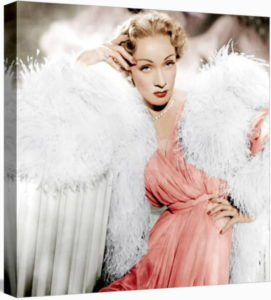
The New Look revolutionized women’s fashion, and helped re-established Paris as the centre of the fashion world after the war. Dior was the arbiter of fashion for most of the following decade. After the release of the New Look, the House of Dior was inundated with orders, especially from world famous stars such as Rita Hayworth and Margot Fonteyn. Before the filming of ‘Grand Alibi’, Marlene Dietrich informed Alfred Hitchcock, that regarding her wardrobe, it was a case of “No Dior, no Dietrich”.
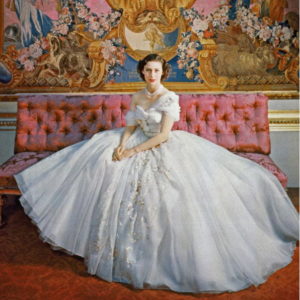
In May 1949, Dior designed a ball gown for Princess Margaret’s birthday, which raised eyebrows when she wore it back in England, probably due to the low-cut neckline as much as the vast quantity of fabric used.
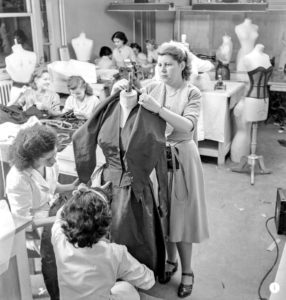
After Dior’s first collection in 1947, each new range from henceforth had a name: the ‘Envol’ and ‘Cyclone’/’Zigzag’ lines in 1948, the ‘Trompe l’Oeil’ and ‘Mid-Century’ ranges in 1949, the ‘Vertical’ and ‘Oblique’ ranges of 1950; the ‘Naturelle’/‘Princesse’ and ‘Longue’ ranges in 1951 and so on, until his last ranges in 1957, the ‘Libre’/’Free’ and ‘Fuseau’/‘Spindle’.
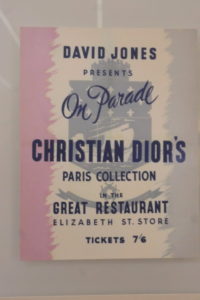
Christian Dior understood the commercial value in presenting his collections in other countries, especially given the number of foreign clients he had started to attract. With this policy in mind, in 1948 he sent his collection David Jones, the Sydney department store, for 2 weeks in August of that year. Indeed, it was the first time that Dior designs were presented abroad. He later signed an agreement between Christian Dior-New York, and the House of Youth in Sydney, operated by the Stein family since 1935, which would manufacture and distribute looks from the New York collections in Australia. Mr Philip Stein was modest when asked what Dior thought of their reproductions of his designs, confessed that Dior had been “very flattering” and greatly impressed with the standard of Australian craftsmanship.
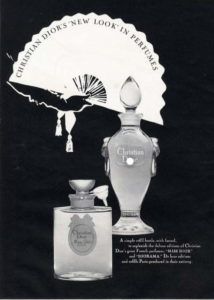
Dior’s first, and most iconic, perfume, Miss Dior, was launched in 1947 just after the couture collection, and was named in honour of Christian’s sister, Catherine, who was familiarly known as Miss Dior. In his 1949 spring/summer collection, Christian Dior named a dress ‘Miss Dior’, two months after the highly successful launch of the perfume in the USA. He was awarded France’s Legion d’Honneur in 1950.
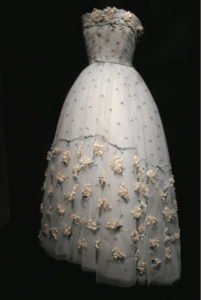
Christian Dior died of a sudden heart attack while on vacation at a spa hotel in Montecatini, Italy on 24 October 1957, while he was playing an afternoon game of cards. His young assistant, the 21-year-old Yves Saint Laurent, who had joined Dior in 1955 at the age of 19, became his successor.
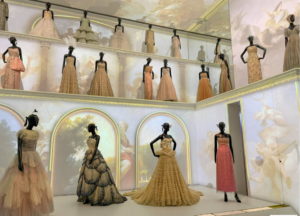
The museum traces the evolution of the House of Christian Dior. The visitor travels through the history of the House via beautiful sets, or scenarios.
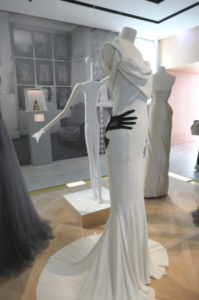
The Dior story is told in 13 themed spaces tracing the beginning, through the inspiration and passions of its founder, right through to today. The journey then traces the evolution of the House through its six successors: Yves Saint Laurent, Marc Bohan, Gianfranco Ferré, John Galliano, Raf Simons, through to the incumbent, Maria Grazia Chirui.
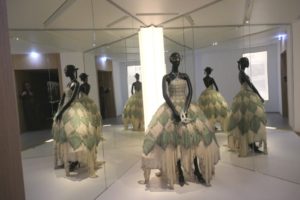
The project for the museum was four years in the making. It was inspired by the successful Dior exhibitions which have travelled the world in recent years from the Victoria & Albert Museum in London, numerous museums throughout the USA, the National Gallery of Victoria, to the Musée des Arts Decoratifs in Paris.
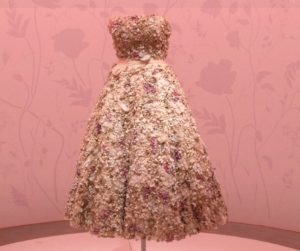
The garments and archive pieces are now exhibited in the very rooms where Christian Dior worked and held his original couture shows. The director of Dior Heritage, Soizic Pfaff, has said that they have many things that were identified and bought especially for the museum, and that “we have sourced many garments, documents, photographs, even gifts which were originally on sale in the 30 Ave. Montaigne boutique, which opened in 1955.”
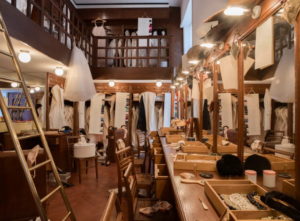
There is also a recreation of the models’ “cabine”, a backstage space where the models used to change and have fittings. As Pfaff says, “it’s as if they never left.” She has worked at Dior since the 1970s and oversees the vast Dior archive that contains documents, sketches, samples and historic pieces spanning the history of the House. The heritage department, which launched in 1987, works to preserve and celebrate that history—sourcing and buying back archive pieces, organising exhibitions, gathering research for books and cataloguing signature design codes.
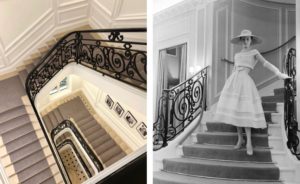
While you walk through the spaces, you can see the famous staircase, in the middle of the exhibition, which was the place where everything happened. It has been described as la column vertebra, the backbone of the House.
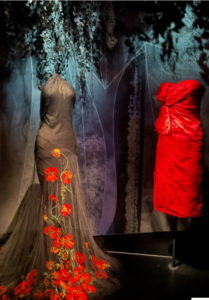
The exhibition includes a room dedicated to the ‘Stars in Dior’, which features dresses worn by the House’s famous ambassadors throughout the years, and the opportunity to see some of the seamstresses, les petits mains, at work.
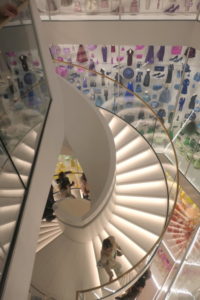
Perhaps the most visually stunning feature of the museum, in our view, is the sweeping, spiral staircase near the entrance of the museum that features miniatures of hundreds of exquisitely made original couture garments and accessories, graded in colour, from the ground floor right to the top, starting with white, cream, pinks and so forth through the colour wheel. It’s absolutely gorgeous!
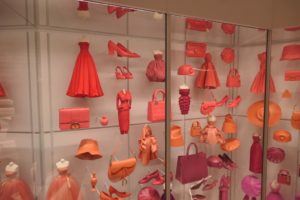
The House of Christian Dior is at 30 Ave. Montaigne, on the corner of rue Francois 1er, and entrance to the museum is at no. 11, rue Francois 1er.
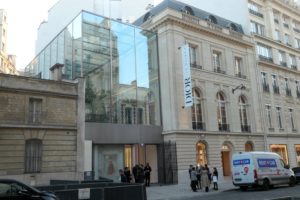
There is a very nice Café Dior in the museum which is only accessible to visitors to the museum. The Galerie Dior Shop is located at 28, Ave. Montaigne. Booking a timed ticket is obligatory. We managed to book ours directly at the museum beforehand, but the website is: www.galeriedior.com Tickets, €12 per adult.
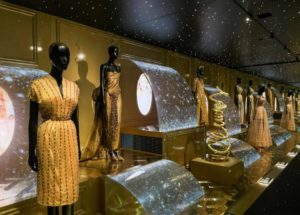
“Couturiers embody one of the last refuges of the marvellous. They are, in a way, masters of dreaming…” Christian Dior, Christian Dior and me, 1956
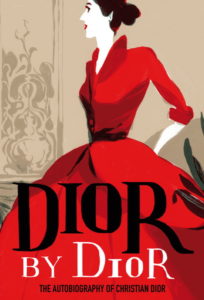


Fascinating – especially the history, as always.
So glad you enjoyed the latest story. As you can well imagine, spending time in that particular museum was a very special treat for an old rag-trade girl like me. They could’ve locked me in overnight and I would have been very happy!
Cheers,
Cheryl